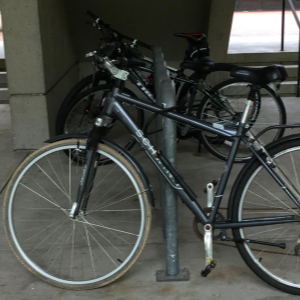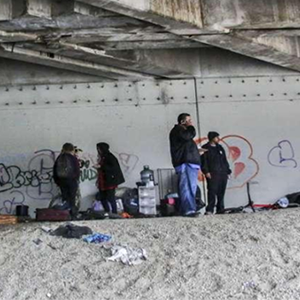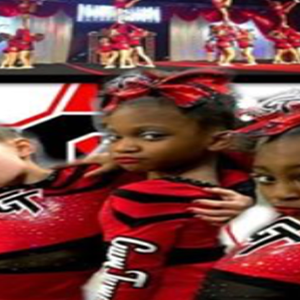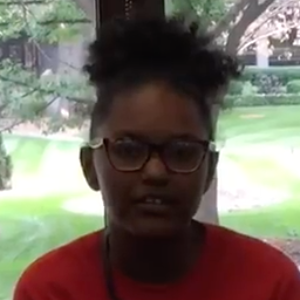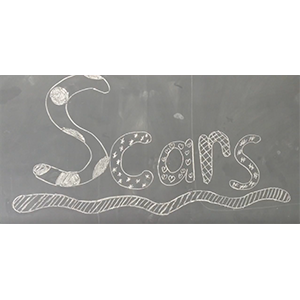DMA as a Telling Case
The Digital Media Academy (DMA) is typically a two-week day camp for rising sixth grade girls hosted at University of Louisville, with variations based on each year’s theme (e.g., “Design Your Future,” “Design Your Community,” “Me in the Making”) and the participants involved. In public documents (e.g., flyers, application materials), the stated goal is for girls to develop their digital literacy as an issue of both economic and social justice. Economically, girls are woefully underrepresented in the high-earning fields of the future—most notably STEM-related fields—in part due to a lack of female role models and fewer “technical problem-solving opportunities through K–12 compared to men” (Crawford). As far as social justice, girls need to see more than the pervasive sexualized and commercialized representations of females. DMA works to redress these concerns by tweaking Stuart Selber’s multiliteracies framework that proposes critical ways for students to be more involved in developing their technological literacy; specifically at DMA, we encourage girls’ technological, critical, and design literacies in ways that invite them to imagine, articulate, and circulate a greater range of envisioned futures for themselves.
Learning to be digital producers also supports a deeper DMA goal: providing opportunities for participants to experience new ontologies beyond what they often encounter. Starting with the premise that girls have something valuable to contribute—an ontology that girls in general, and girls in low-performing schools in particular, may seldom encounter—DMA creates the conditions for girls to experience this possibility.
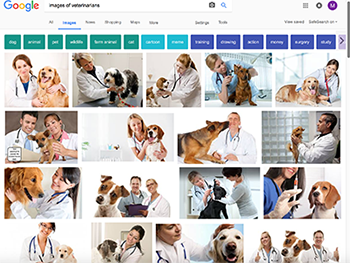
One way DMA fosters these newer ontologies is through camp activities and assignments. For example, on the very first day, we ask girls to brainstorm about how they understand themselves or how they imagine themselves in the future, and then use Google Images to examine dominant depictions of those ideas. This activity prompts girls to ask why they don’t see themselves as competent doers: why, girls have asked, are there no doctors of color when we Google “veterinarians, ” no females when we Google “soccer players,” and no images matching anyone in the room amid the primarily white, clear skin, perfect teeth, long straight-haired, generally sexualized images that appear when we Google “girls”? We next ask the campers to assemble their own understandings of who girls are, sometimes using GIMP to design pictures or PhotoVoice to produce projects where girls pair images with a short text to explain what it means to be a girl in Louisville (Click on "Bike," "Second Chances," or "Cheer" below).

The range of girls’ responses illustrates how campers take up our prompt. The author of the "Bike" PhotoVoice, for example, finds being a girl to be “amazing,” but laments that “Girls also have to overcome people judging a book by its cover . Some boys or others may judge a girl on being scrawny and small the may think they are weak. They should know that girls are powerful, strong, and smart and are capable of the impossible.” The author of "Second Chances" echoes a theme a teacher introduced when describing her rescue dog, but this DMA author includes the specter of homelessness and rejection in girls’ lives when she writes, “So if you have been told you were trash by your family and have been ‘thrown out’ then don't worry you will always, always have a second chance.” The author of the "Cheer" PhotoVoice mixes some technical irregularities (e.g., distorted image; sparse punctuation and capitalization) with conventional girl power discourses, such as working hard to achieve goals and having fun with friends: “Well, what it means to be a girl is to be confident so,i do cheer so i work hard cheer isn't easy so i was being strong and pushed.I love cheer so much so if i want to reach my goal i can do what i always dreamed of being the greatest!” Such diverse responses among DMA participants set up conversations about the many, often conflicting, chains of meanings the campers navigate as they think about what it means to be a girl today.
PhotoVoice Projects and Videos from DMA Campers. Click to see.
Being a girl in Louisville

Being a girl in Louisville is kind of like riding a bicycle. Its an amazing journey to explore with that wind blowing in your face making you feel amazing. Louisville is full of fun activities girls of all ages can participate in. In Louisville there are amazing people to meet and be inspired by. Sometimes like riding a bike there are bumps in the road and sidewalk you have to face. In Louisville there are things girls have to overcome like the fact that our city has a male mayor, our state has a male governor, and or country has a male president. Girls also have to overcome people judging a book by its cover . Some boys or others may judge a girl on being scrawny and small the may think they are weak. They should know that girls are powerful, strong, and smart and are capable of the impossible. Being a girl in Louisville is like riding a bike. You start with training wheels then are ready to go two wheeled. Every single girl in Louisville and all girls are Amazing in there own unique way. They can choose there own unique, beautiful path. :)
Second Chances
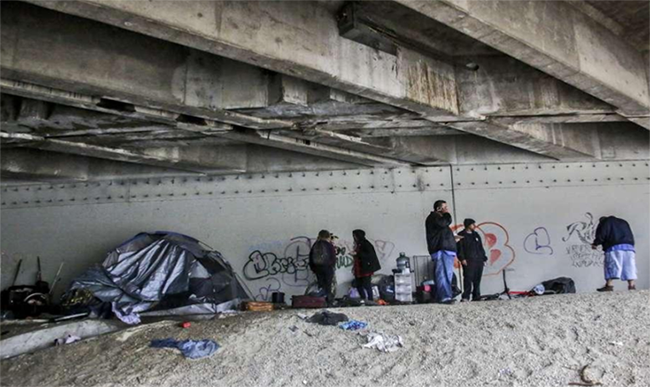
What it means to be a girl in louisville, to me it means you get second chances. My picture shows second chances by representing the homeless and how their given second chances of a home or a foster home. So they are given a second chance to fit in with civilization and are given a chance for a home and for food and water. The way my picture shows this is its showing a version of a house a homeless person would possibly live in. My point is that girls, you will always get a second chance just like the homeless people living in bushes and the streets. To every girl out there remember it is okay if you mess up, because you will always get a second chance. So if you have been told you were trash by your family and have been "thrown out" then don't worry you will always, always have a second chance.
To Be Confident

Well, what it means to be a girl is to be confident so,i do cheer so i work hard cheer isn't easy so i was being strong and pushed.I love cheer so much so if i want to reach my goal i can do what i always dreamed of being the greatest! This picture describes the cheer life also that me and my cheer friends have a ball at competitions it's so fun to be a cheerleader!
Sizzle Sisters
Scars
A second series of assignments asks girls to create short videos to present to communities they want to be in conversation with. Beta projects take 1–2 days in which girls research initial ideas and learn technological, critical, and design skills as they try out being authors of messages to be shared in public venues. Girls’ uptake of these pedagogical goals can be seen in the three-part video the four-member Sizzling Sisters created in order to illustrate the disconnect between the common hype about females being leaders and the lack of tangible examples circulating in popular discourse. In the opening part, DMA campers conducted primary research by interviewing passers-by on the university’s quad—something they learned from being interviewed by a reporter from our local NPR affiliate and by DMA researchers—to discover who people cite when asked questions about male and female leaders in their community (in the video, two interviewees from our college campus couldn’t come up with a single female leader in their community; another pointed to Mother Teresa and yet another to Michelle Obama, answers that surprised the girls since neither of these women lived in Louisville). In the middle part, DMA girls demonstrated that they can be leaders in activities that they find important (in the video, girls are stepping, with the following words scrolled across the screen: We can be ourselves/We can do anything/We feel empowered/strong/This is our fight/#girl power). In the final part, girls countered the absences evident in the first part of the video by showcasing female leaders that surround them (in the video, girls displayed a range of images, including teachers, family members, a UofL senator, and overlooked historical figures), positing possible futures for the campers themselves.
By the end of camp, girls collaborate on more complex videos that showcase the campers’ artistic and technical competence. Consider, for instance, Scars, a video that focuses on bullying and suicide. The authors of this video not only wrote the script, composed the rap, and performed music, but they filmed across campus, figured out technical aspects of managing files, and delved into the detail work of editing. Creating this video clearly enhanced the girls’ digital literacies, but it also allowed them to take up issues they care about and offer their perspective. Other campers may have picked different topics, but their final projects had similar effects.

Throughout DMA, we organizers not only design activities for girls to see and respond to issues they care about, but find ways to amplify campers’ voices so these girls have the opportunity to both contribute to and shape conversations that matter to them—an experience many of the girls report as uncommon. This work is most evident in the final public showcase, held in the august, 145-seat, wood-paneled Chao Auditorium, centrally located in the university’s library. In this forum, girls present their videos and host a "Meet the Artists" session where they, as directors, actors, editors, musicians, researchers, and script writers, answer questions posed by family, friends, community members, and university faculty and administrators—including the University President, A&S Dean, department chairs, faculty, students, and teachers (see Little Ninjas). In addition to the showcase, girls and teachers share their understandings of DMA and DMA girls in multiple radio, tv, newspaper, and magazine venues, including Louisville’s NPR affiliate (WFPL), NBC affiliate (WLKY), The Courier-Journal, the University of Louisville Communications and Marketing department (e.g., UofL Today), and multiple academic venues, including dozens of academic articles and conference presentations. Seeing themselves and previous DMA campers taken seriously—as featured speakers in a university-based forum, as the front page story of the community section in the newspaper, as the subject of radio and television broadcasts—encourages girls to recognize themselves in chains of meaning they seldom experience as elementary students from current or former low performing schools.

